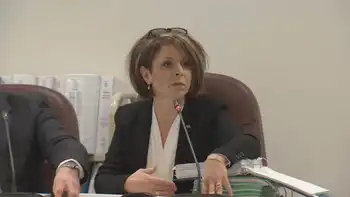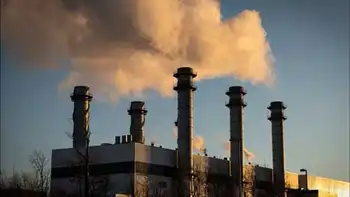FERC-NERC blackout report calls for improved planning
By Federal Energy Regulatory Commission
Protective Relay Training - Basic
Our customized live online or in‑person group training can be delivered to your staff at your location.

- Live Online
- 12 hours Instructor-led
- Group Training Available
A joint FERC-NERC staff report on the Sept. 8, 2011 blackout, issued recently after a nearly eight-month inquiry, recommends that transmission operators and balancing authorities improve how they plan for operations to account for the status of facilities outside their individual systems, the effect of external operations on their own systems and how operation of transmission facilities under 100 kiloVolts kV can affect the reliability of the bulk power system.
"This report highlights the growing need for more coordination of grid operations in the West," FERC Chairman Jon Wellinghoff said. "Implementing the recommendations in this report will assist in enhancing the planning and system awareness measures that are necessary to operate an efficiently integrated bulk power system, and reduce costs to consumers from these types of outages that could continue if operational efficiencies are not improved."
"This event underscores how complex and interdependent our North American electric systems are and the critical importance of information sharing, communications, system studies and coordinated operations among all interconnected systems," said Gerry Cauley, president and CEO of NERC.
"Transmission operators, Balancing Authorities and Reliability Coordinators must work together to effectively manage this complex system. I would like to recognize the effective collaboration between FERC and NERC staff during the course of this inquiry".
"This blackout report provides a series of lessons learned from the September 2011 event that is available to industry for use as a tool to improve their operations and planning of the grid," FERC Commissioner John Norris said. "My hope is that the findings and recommendations in this report will be utilized to the broadest extent possible in order to enhance the reliability and efficiency of the Bulk Power System."
The inquiry was initiated to determine how the blackout occurred and to make recommendations to avoid similar situations in the future. FERC and NERC staff used on-site interviews, sophisticated computer modeling, event simulations and system analysis to make the determination that entities responsible for planning, operating and monitoring the bulk power system were not prepared to ensure reliable operation or prevent cascading outages in the event of a single contingency: the loss of Arizona Public Service's APS Hassayampa-North Gila 500 kV transmission line.
That line loss itself did not cause the blackout, but it did initiate a sequence of events that led to the blackout, exposing grid operatorsÂ’ lack of adequate real-time situational awareness of conditions throughout the Western Interconnection. More effective review and use of information would have helped operators avoid the cascading blackout. For example, had operators reviewed and heeded their Real Time Contingency Analysis results prior to the loss of the APS line, they could have taken corrective actions, such as dispatching additional generation or shedding load, to prevent a cascading outage.
The report recommends that bulk power system operators improve their situational awareness through improved communication, data sharing and the use of real-time tools.
It also recommends that: -- System planners and operators recognize, study and incorporate the effects of sub-100 kV systems on bulk power system reliability into their planning and operations
-- The Western Electricity Coordinating Council WECC recognize and study Interconnection reliability operating limits
-- Transmission Owners and Operators review overload protection relay settings to give them more time to mitigate overloads
-- Transmission Operators and WECC study the effects of special protection systems, remedial action schemes and safety nets, such as the one that disconnected San Diego from the high voltage lines south of the San Onofre Nuclear Generating Station, to understand how they affect reliability and to ensure that they do not have unintended or undesirable effects and
-- System operators plan and account for phase angle differences in order to be able to re-energize transmission lines following outages.











